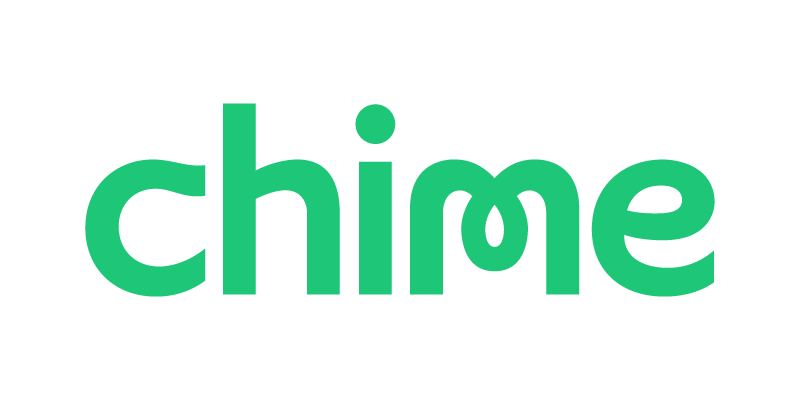Many or all of the products featured here are from our partners who compensate us. This influences which products we write about and where and how the product appears on a page. However, this does not influence our evaluations. Our opinions are our own. Here is a list of our partners and here's how we make money.
Money-saving apps can make the process of saving money easier over time. You can fill your piggy bank automatically so that savings goals can be met without stress. Check out a few of our favorite apps below.
 | Qapital: Best for goal setting
|
Acorns: Best for investment transfers
| |
 | Digit: Best for simplicity
|

1. Qapital
Best for goal setting

How it works: For $3 a month, Qapital lets you set rules to automate savings. For example, every time you spend money from a linked funding account, Qapital can round up the total to the nearest dollar (or more) and move the amount into a goal account held at a partner bank and is insured by the Federal Deposit Insurance Corp. Or you can contribute a set amount to your fund on a regular basis. Qapital also offers premium memberships that offer debit cards and let you set rules to automate investing, but they cost more – up to $12 a month.
You’ll need an outside checking account to link to Qapital and fund your goals. Withdrawing money from a Qapital account takes one to two business days.
Perks: Do you want to share a goal with a spouse or friend? Qapital’s premier membership also gives you the ability to create a Dream Team, where you can invite a partner to your goal. You choose the level of visibility you want to share, including balance and transaction information. You can also make instant transfers to that person’s Qapital account as needed.
Another perk is you earn 0.10% interest — but that is low for an online savings account. After you’ve accumulated some savings by using Qapital’s automation rules, consider transferring the funds into a high-yield account.
Downsides: You need to be a member to use the app, and there are three levels of membership that cost $3, $6 or $12 per month, respectively. Note that the Qapital Spending account’s debit card is free to use for transfers and purchases, but there may be fees for using ATMs. Qapital won’t charge you, but the ATM owner might.
» Want more options? Check out NerdWallet's favorite high-yield online savings accounts
2. Acorns
Best for investment transfers
at Acorns
How it works: Acorns is an investing app that rounds up your purchases to the nearest dollar and automatically adds the difference — taken from a linked spending account — to an Acorns investment account. That money is invested in a portfolio based on your income and goals, and you’ll earn a return on the investment.
A basic Acorns account costs $3 a month and includes a checking, investing and retirement account. (There is a $5 monthly fee option if you add investment accounts for kids.) Each Acorns portfolio is composed of exchange-traded funds (generally a basket of stocks and bonds), with options that range from conservative (having a higher percentage of bonds) to aggressive (having a higher percentage of stocks). There are also socially responsible portfolios featuring companies that meet environmental, social and governance requirements.
Perk: If you make purchases using a promotional bonus offer from one of the company’s partners — such as Apple and Walmart — and use a linked card, the partner gives back to your Acorns investment account.
Downsides: Because investments are not guaranteed, your balance may shrink if there’s a dip in the investments where you’ve allocated your funds. (When it comes to saving versus investing, we generally recommend starting with a high-yield savings account and then moving to investments after you’ve built an emergency fund and saved for your short-term goals.)
It can also take several days to withdraw money from your account because shares in the invested ETF must be sold first.
» Want to learn more? Check out NerdWallet’s review of Acorns

Member FDIC
Marcus by Goldman Sachs Online Savings Account

3.75%
$0
3. Digit
Best for simplicity

How it works: Digit calculates what you can save based on your spending and income patterns in a linked bank account. Then it transfers money that you can spare into an FDIC-insured account. There’s a six month free trial period when you sign up for Digit, but after that, it costs $5 per month. You can set a maximum daily amount to transfer from your external bank account, or set a safe savings level, which is a minimum checking account balance required before transfers are made.
Perk: You’ll earn a 0.10% annualized savings bonus paid every three months, based on the average daily balance kept in your Digit account during that period. Other online savings accounts have higher rates, however. For longer-term goals, consider transferring your money into a high-yield account.
Downside: While you can set balance limits, you don’t generally control the exact amount Digit transfers each day. This means Digit auto-savings could cause an overdraft in the external account. Digit says it will refund up to two overdraft fees triggered by such transfers. However, in August 2022, the Consumer Financial Protection Bureau announced a $2.7 million penalty against the company that owns Digit, because it “did not always reimburse consumers for overdraft fees caused by the auto-save tool.” To avoid a potential overdraft on your account, you’ll want to pay careful attention to your balance and transfer patterns. You also have the option to pause Digit transfers.
» Looking for more options? Read NerdWallet's picks for the best high-interest accounts
Using apps to save money
If you find it difficult to build a savings balance, using an app that automatically does it for you can be a good first step. Getting yourself in the habit of regularly putting aside some money — and seeing your balance compound and grow — can put you on track to successfully managing income and expenses. (Read more about how compound interest works.) Once you have some money set aside, you can take the next step and open or contribute to a regular savings account.
How to open a savings account
If you don’t have a savings account, you can open one by submitting an application, either online or at a bank branch. You’ll need to provide your Social Security number and contact information, along with at least one form of identification, such as a driver’s license or a passport. (For a joint account, everyone wanting access to the account must provide this information and ID.) You generally can deposit money with cash (if in person) and by check, as well as with a bank transfer from an existing account.
How much should I have in savings?
For a savings account that holds your emergency fund, work your way toward covering three to six months’ worth of basic living expenses. You can start small — having just $500 saved can help you pay for some financial emergencies without going into debt. For short-term needs, having multiple savings accounts or one that’s divided into “buckets” can be handy, especially if you’re tucking away money to reach specific goals, such as a vacation. But once you have a buffer for emergencies, try to begin building a retirement account with investments, where those dollars will earn more than they would in a savings account.
With inflation, are savings accounts worth it?
When inflation increases significantly higher than the national average savings rate, it may seem that savings account balances are losing ground to rising prices. There are ways to shore up your savings, such as transferring funds to a high-yield account. But the main reason for saving cash is to have something set aside for an unexpected expense or financial emergency. Building up your savings is even more worthwhile now because it can keep you from going into debt, which can be very expensive as interest rates rise to slow inflation.














